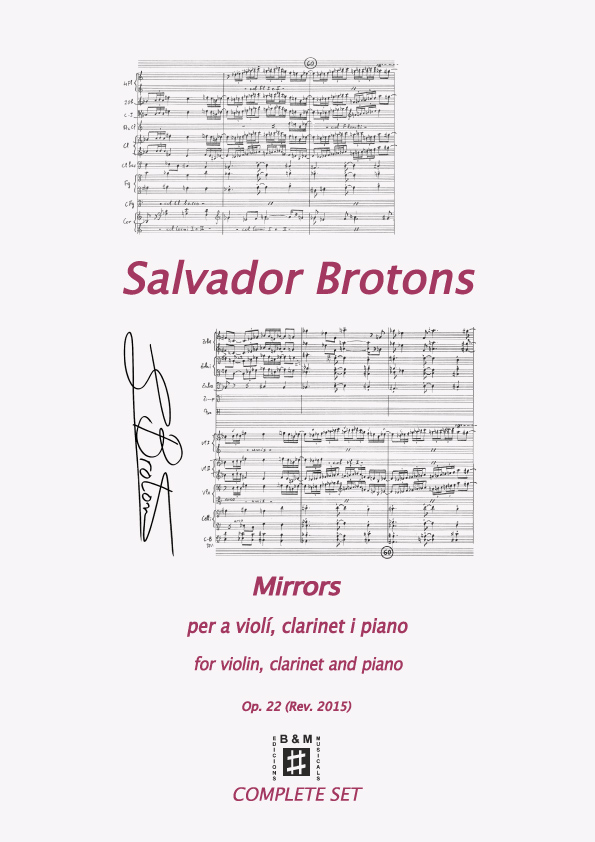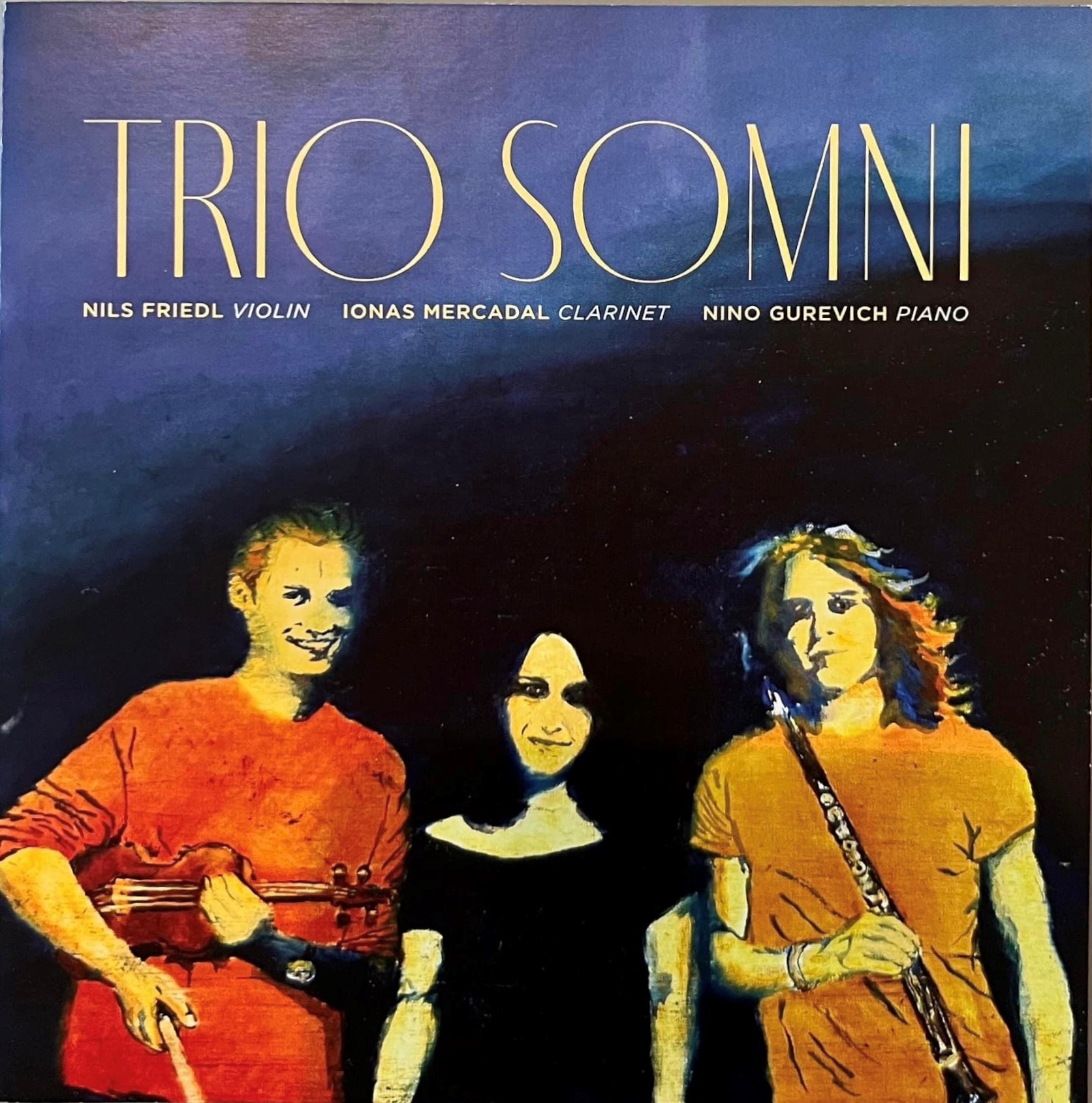Description
Author
Format
Instrumentation
Duration
Pages
Year of composition
ISMN
Ref.
“Mirrors” was written in the fall of 1979 with the intention of submitting it to the 1st Concurso de Jóvenes Compositores de Juventudes Musicales de Barcelona. I composed the piece in one go and it won the first prize in that competition. The premiere was commissioned to the Trio Bartók of Barcelona, who performed it as part of the cycle of concerts in the palaces of Montcada Street.
Thirty-six years later, I have made a thorough revision and expansion of the composition. I have changed the original title, “Simetries”, for “Mirrors”, and I consider that the final result is much more satisfactory.
The composition, about 12 minutes long, is conceived as a single continuous movement, structured in the form of a mirror. The symmetry of the work is reflected both in the scheme of the movements (Adagio – Allegro – Adagio – Allegro – Adagio) and in the internal structure of the phrases. Almost all of them are six bars long, except for the second theme, which is made up of four-bar phrases. By observing the location of the rehearsal numbers, the structure of each phrase can be easily identified.
The work begins with a brief Adagio that functions as a prelude and also as a postlude. The piano is presented with an aggressive character, while the violin and clarinet respond with gentleness and distance. The Allegro that follows is basically contrapuntal, with three main themes: a rhythmic first theme, a lyrical second theme, and an obstinate third theme. It develops as a series of variations exploring various instrumental combinations and coloristic effects.
The central Adagio has more extension and depth. Maintaining the same tempo as the prelude and postlude, this Adagio unfolds with increasing dramatic tension until it reaches a climax of sonorous intensity. It is interesting to note that the following Allegro re-exposes previous themes, but without repeating literally any fragment. It is a new space of variations that explore new timbral and instrumental effects.
After a process of relaxation, the composition concludes with the postlude Adagio, where the music gradually fades to a final peace. The violin ascends towards the higher register, while the clarinet and piano descend towards the lower registers, generating a contrary movement that suggests balance and serenity.
Salvador Brotons





















There are no reviews yet.